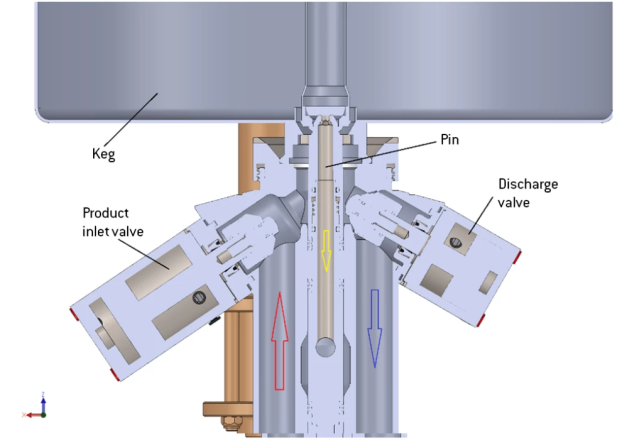Since the company was founded in 1990, drumming has been Comac’s core business: over the decades, the company’s ability to adapt to market trends and the ability to develop innovative solutions has made our collaboration with companies possible. of all sizes, from craft breweries to major international players in the sector.

These results have been achieved, and continue to be, also thanks to the Comac Research and Development department that works every day to offer customers increasingly high-performance systems suited to the specific needs of each one.
The department’s most recent project was also born from this desire, which concluded the preliminary study phase: Fast Filling , designed to increase the filling speed – and therefore the productivity – of all our kegs.
Project overview
The objective of the Fast Filling project is to investigate and implement improvements (of a mechanical and software type) on keg machines and systems to optimize the time required to perform a complete filling cycle.
For the project, the most used type of drum was used as a reference, i.e. the standard stainless steel one.
The work was based on CFD (Computational Fluid Dynamics) simulations and in its first phase it included an assessment of the state of affairs, observing the physical behavior of piping, valves and cylinder heads currently used in our kegs.
The state of affairs, from the fluid-dynamic point of view, therefore represents the starting point, but also the arrival point of the project. In fact, all the changes were implemented taking the current condition as a reference.
The parameters taken into consideration in defining the changes applied to the model are:
– Speed gradient
– Pressure drops
– Intensity of the vortices
Simulation results “state of affairs”
Approach to the problem
The current behavior of a Comac keg in a filling cycle is represented by the diagram below.
Complete filling cycle – current status
The blue curve indicates the instantaneous flow, i.e. the quantity of liters (flow rate) of product entering the keg during filling. The initial phase of the cycle is characterized by almost zero flow, since the modulating CO2 discharge valve is only opened at the value s1. By modulating the valve at s2, a transient is generated which brings the system to steady state conditions.
The final filling phase foresees the partial closing of the modulating valve (which is brought back to s1) consequently causing a slowing down of the flow. The last step involves the total closure of the modulating valve and the simultaneous closure of the high flow with consequent passage to slow flow. This final step, in particular, is necessary to ensure the accuracy of the total volume fed into the drum before the product inlet valve (head) closes completely.
These data were the fundamental basis on which to place all the changes to be made, with the aim of reducing the filling time as much as possible, compatibly with the possibility of foam formation.
Results
To achieve this goal, several modifications have been designed:
– simplification of the piping route
– replacement of the high / low flow valve with a more performing one
– translation and rotation of the locking cylinder
The changes implemented have brought significant improvements on the fluid dynamics parameters.
In particular, the simplification of the piping path and the replacement of the high / low flow valve with a more performing one have reduced the pressure drops, while the translation and rotation of the closing cylinder have contributed to reducing the speed gradient as well as the turbulence at the inside of the head.
“Modified model” simulation results
The improved filling cycle (see figure below) was then determined on the basis of an optimization calculation, taking into account some parameters:
– the acceleration profile of the filling curve in the initial transient was kept constant.
– the steady-state flow rate was increased respecting the reference fluid dynamic parameters (ie the current ones).
– the decrease in flow obviously takes into account the total capacity of the drum.
Following the changes, all the indicators considered complied with the thresholds defined in the initial phase.
Conclusions
Following this study phase, the Fast Filling project is now ready for a further step: soon the Comac Research and Development Office will test the modifications experimentally, through a test bench.
If the tests confirm the expected progress, the changes will be immediately applied to all Comac kegs, allowing an increase in productivity (kegs / hour) of 18%.
The benefits for customers will therefore be tangible: Comac machines will be even faster and more efficient, perfect for the needs of those looking for a plant that combines high productivity and maximum quality of the finished product.


